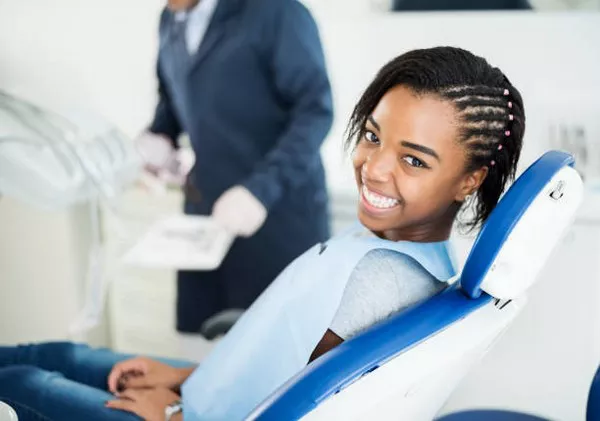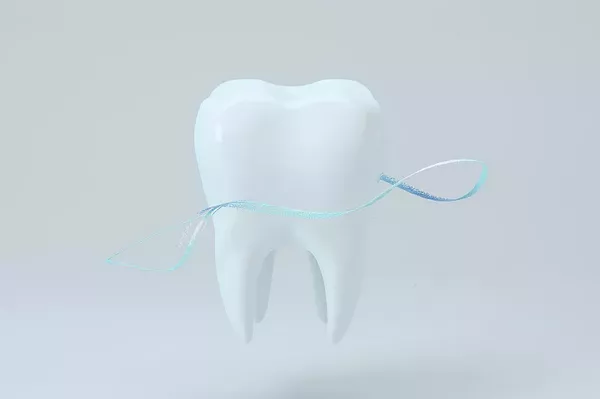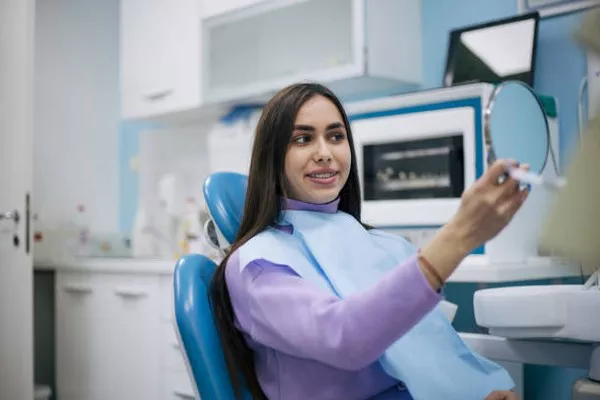Structure and Impact on Appearance
Understanding the structure of teeth is essential to comprehend why teeth appear yellow, particularly behind. Teeth are complex organs composed of multiple layers, each with its own properties and functions. The two primary layers influencing the color of teeth are the enamel and dentin.
Enamel is the outermost layer of the tooth. It is the hardest and most mineralized substance in the human body, composed primarily of hydroxyapatite crystals. Enamel is semi-translucent, which means its color can be influenced by the underlying dentin and any substances that come into contact with it. Healthy enamel typically appears white, but since it is translucent, the color of the dentin beneath it can show through.
Dentin lies beneath the enamel and is much thicker. It is a yellowish, porous material made up of microscopic tubules. Unlike enamel, dentin is less dense and has a yellow to brown hue. The thickness and health of dentin can significantly impact the color of teeth. If the enamel is thin or worn, the yellowish dentin is more visible, making the teeth appear yellow.
Moreover, the back of the teeth, particularly the molars, can appear more yellow because the enamel in these areas tends to be thinner, and the dentin more prominent. This structural understanding sets the stage for exploring the various causes of tooth yellowing.
see also: Which teeth is healthy yellow or white?
Causes of Yellowing
Tooth yellowing can be attributed to a combination of internal and external factors. Understanding these causes can help in addressing the issue effectively.
Internal Factors
Genetics: Genetics play a significant role in the color of your teeth. If your parents have naturally yellowish teeth, you might inherit this trait. Genetic factors influence the thickness and translucency of enamel and the natural color of dentin.
Aging: As you age, enamel wears down, exposing more of the yellow dentin beneath. The cumulative effect of wear and tear, dietary habits, and other factors over the years contribute to teeth appearing more yellow.
Health Conditions and Medications: Certain health conditions and medications can affect tooth color. Conditions like dentinogenesis imperfecta cause the teeth to have a blue-gray or yellow-brown tint. Additionally, antibiotics such as tetracycline and doxycycline, when administered to children whose teeth are still developing, can cause yellowing.
External Factors
Diet: Consuming foods and drinks with strong pigments can stain the enamel. Common culprits include coffee, tea, red wine, cola, berries, and soy sauce. Acidic foods and beverages can also erode enamel, making the yellow dentin more visible.
Smoking and Tobacco Use: Nicotine and tar in tobacco products are notorious for staining teeth. Smokers often have yellowish or brownish teeth due to the substances in cigarettes and other tobacco products.
Poor Oral Hygiene: Inadequate brushing and flossing allow plaque and tartar to build up on the teeth, causing them to look yellow. Plaque is a sticky film of bacteria that forms on the teeth, and if not removed, it hardens into tartar, which can only be removed by a dentist.
Environmental Factors: Excessive fluoride from environmental sources (high fluoride levels in water) or overuse of fluoride-containing dental products can lead to a condition known as fluorosis, which causes yellow or brownish stains on the teeth.
Oral Hygiene
Maintaining good oral hygiene is paramount in preventing tooth yellowing. Here are key practices that can help:
Regular Brushing: Brush your teeth at least twice a day using fluoride toothpaste. Brushing removes food particles and plaque that can cause stains.
Proper Brushing Technique: Use a soft-bristled toothbrush and gentle, circular motions to avoid wearing down the enamel. Hard brushing can erode enamel, making the teeth more susceptible to yellowing.
Flossing: Floss daily to remove plaque and food particles from between your teeth and along the gumline. This prevents tartar buildup, which can contribute to yellowing.
Mouthwash: Use an antibacterial mouthwash to kill bacteria that can cause plaque and tartar buildup. Some mouthwashes also have whitening properties.
Regular Dental Check-ups: Visit your dentist regularly for professional cleanings and check-ups. Dentists can remove plaque and tartar that you might miss during regular brushing and flossing.
Professional Cleaning
Professional dental cleanings are essential for maintaining the color and health of your teeth. During a dental cleaning, a dental hygienist will:
Remove Plaque and Tartar: Plaque and tartar can build up in hard-to-reach areas that regular brushing and flossing might miss. Professional cleaning ensures these deposits are removed.
Polish Teeth: After removing plaque and tartar, the dental hygienist will polish your teeth to remove surface stains. This helps in maintaining the natural color of your teeth.
Fluoride Treatment: Some dental cleanings include a fluoride treatment that helps strengthen enamel, making it more resistant to staining and decay.
Regular professional cleanings not only keep your teeth looking their best but also contribute to overall oral health by preventing gum disease and other dental issues.
see also: What does it mean when you have yellow teeth?
Treatment Options
If your teeth are already yellow, several treatment options can help restore their whiteness.
Professional Whitening Procedures
In-Office Whitening: This is one of the most effective methods for whitening teeth. Dentists use high-concentration bleaching agents and sometimes a light or laser to accelerate the whitening process. In-office treatments can make your teeth several shades lighter in just one visit.
Custom-Fit Whitening Trays: Dentists can provide custom-fit trays for at-home use. These trays ensure even distribution of the whitening gel, which is typically stronger than over-the-counter options. You wear the trays for a specified period each day until you achieve the desired results.
At-Home Whitening Kits
Whitening Strips: These are flexible plastic strips coated with a thin layer of whitening gel. They are easy to use and can lighten teeth by a few shades with consistent use.
Whitening Toothpaste: While not as effective as professional treatments, whitening toothpaste can help remove surface stains over time. They contain mild abrasives and chemical agents to polish teeth and remove stains.
Over-the-Counter Whitening Kits: These kits include whitening trays and gels that are less concentrated than those provided by dentists. They can be effective but usually take longer to see noticeable results.
Preventive Measures to Avoid Yellowing
Preventing tooth yellowing involves making conscious lifestyle choices and maintaining diligent oral hygiene.
Dietary Changes: Limit the intake of staining foods and beverages. If you do consume them, rinse your mouth with water afterward or use a straw to minimize contact with your teeth.
Quit Smoking: Smoking is one of the leading causes of yellow teeth. Quitting smoking not only improves the appearance of your teeth but also enhances overall health.
Use a Straw: When drinking beverages that can stain teeth, such as coffee, tea, or soda, use a straw to reduce contact with your teeth.
Chew Sugar-Free Gum: Chewing sugar-free gum increases saliva production, which helps wash away food particles and bacteria that can cause staining.
Rinse After Meals: Rinsing your mouth with water after meals can help remove food particles and reduce the risk of staining.
Consultation with a Dentist
For personalized advice and treatment plans, consulting with a dentist is crucial. Dentists can:
Assess the Cause of Yellowing: A dentist can determine whether your yellow teeth are due to external staining, internal factors, or a combination of both.
Recommend Appropriate Treatments: Based on the assessment, a dentist can recommend the most effective treatment options tailored to your needs, whether it’s professional whitening, veneers, or other cosmetic procedures.
Provide Ongoing Care and Advice: Regular dental visits allow for continuous monitoring of your oral health and the effectiveness of whitening treatments. Dentists can adjust your treatment plan as needed.
Preventive Care: Dentists can offer preventive care tips and products to help you maintain the results of your whitening treatments and prevent future yellowing.
Conclusion
Yellowing teeth, particularly behind, can result from a variety of internal and external factors, including genetics, aging, lifestyle habits, and poor oral hygiene. Understanding the anatomy of teeth, maintaining good oral hygiene, and seeking regular professional cleanings are crucial steps in preventing and treating tooth yellowing. With a range of treatment options available, from professional whitening procedures to at-home kits, achieving a brighter smile is within reach. Consultation with a dentist ensures personalized care and effective treatment plans, helping you maintain a healthy and vibrant smile for years to come.
FAQs about Yellow Teeth
1. Why are the backsides of my teeth yellow?
The backsides of your teeth can appear yellow for several reasons:
Plaque and Tartar: Plaque buildup, if not removed through regular brushing and flossing, can harden into tartar, which is yellow or brown and often forms on the backsides of teeth.
Staining Foods and Drinks: Consumption of stain-causing foods and beverages like coffee, tea, and wine can lead to discoloration, especially in areas that are harder to clean.
Smoking: Tobacco products can cause significant staining, particularly on the backsides of teeth.
Poor Oral Hygiene: Inadequate brushing and flossing can result in the accumulation of plaque and stains.
2. How do you fix yellow back teeth?
To address yellowing on the backsides of your teeth, consider the following:
Professional Cleaning: Schedule regular dental cleanings to remove plaque and tartar.
Proper Brushing Technique: Ensure you are brushing for at least two minutes, twice a day, and reaching all surfaces of your teeth, including the backs.
Flossing: Daily flossing helps remove plaque and food particles from between teeth and along the gumline.
Whitening Treatments: Use whitening toothpaste or over-the-counter whitening products designed to remove surface stains.
3. How do you get rid of yellow stains on the back of your teeth?
To effectively remove yellow stains on the backs of your teeth:
Baking Soda: Occasionally brush with a mixture of baking soda and water to help remove surface stains.
Hydrogen Peroxide: Use a hydrogen peroxide mouthwash or mix it with baking soda to create a paste for brushing.
Dental Tools: Interdental brushes or water flossers can reach areas that regular brushing might miss.
Professional Whitening: Dentists can offer stronger whitening treatments that penetrate deeper stains.
4. What is the yellow buildup on the back of my teeth?
The yellow buildup on the back of your teeth is often due to:
Plaque: A sticky film of bacteria that forms on your teeth. If not removed regularly, it can harden into tartar.
Tartar: Hardened plaque that is yellow or brown and adheres firmly to the teeth, often needing professional removal.
Food and Drink Stains: Residues from foods and beverages that can stain the teeth over time.
Poor Oral Hygiene: Insufficient brushing and flossing, especially in hard-to-reach areas, leading to accumulation of plaque and stains.
You Might Be Interested In





























